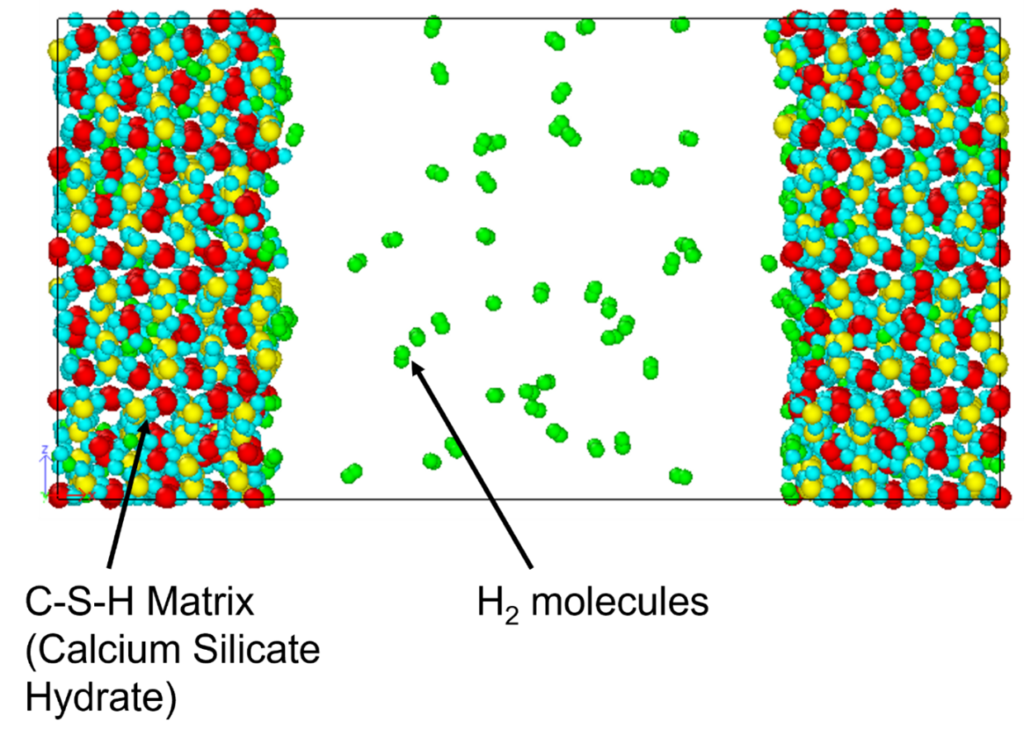Repurposing oil and gas infrastructure into future hydrogen transportation and storage facilities
Research Lead
Shanaka Kristombu Baduge
Funding
· Research Initiatives Fund (RIF) Collaborative Equipment Grant 2022 ($ 210,000), The University of Melbourne
Research collaborators
· INCITIAS Pty Ltd, Melbourne, Australia
Overview
Climate change is the current biggest global threat to the existing species on Earth. Greenhouse gas emissions are causing the earth to experience 1.10C warmer climate conditions compared to pre-industrial levels. It is essential to keep the temperature increment below 1.50C to secure liveable conditions on earth. Through The Paris Agreement and National Declaration Contributions (NDCs), more than 70 countries have committed to reaching net zero targets by 2050, which requires a cut-off of 45% of global emissions by 2030.
Hydrogen is a promising energy carrier for global decarbonisation to reach net zero targets. Infrastructure development for storage and transportation of various hydrogen carrier mediums, such as compressed hydrogen gas and liquid hydrogen, is critically important to accommodate the growing demand in the hydrogen economy. Construction of new storage tanks and pipelines and conversion of existing infrastructure for hydrogen transportation and storage require research on materials to cope with severe storage conditions of high pressures and very low temperatures with hydrogen-specific issues such as hydrogen embrittlement and hydrogen diffusivity. An integrated material testing framework for molecular, nano-micro and macro scales is vital to develop new materials and understanding material failure mechanisms. This project intends to focus on infrastructure for compressed hydrogen gas, liquid hydrogen, and other hydrogen forms such as ammonia. It develops material testing frameworks for storage and transportation mediums to assess the reliability and safety of repurposing existing and new infrastructures.
Capabilities
Custom-built cryostat: Testing materials for liquid hydrogen storage infrastructure require laboratory facilities operating at 20K, as hydrogen liquefies at 20.4 K at 1 atm pressure. Our team currently possess a customised cryostat specifically built to operate at 20K or lower temperatures to test the mechanical properties and insulation properties of materials. The cryostat will enable the development of new storage and generation infrastructure for liquid and cryo-compressed hydrogen and repurpose existing Liquid Natural Gas storage and transportation infrastructure into future liquid hydrogen infrastructure.
Nano-indenter: Nano-indenter allows nano-micro scale material testing for elastic modulus, hardness, toughness, fracture, fatigue, and wear of materials. It provides a significant advantage in material testing due to its use of small-sized samples. And with the past research our team have conducted, we currently own frameworks to interpret macro scale properties from nano-indenter results.
Hydrogen exposure testing: the University of Melbourne has facilities (High P&T Rubotherm Balance) to expose and weigh material samples to hydrogen gas at 0–400 bar from ambient–600K temperatures. Also, electrochemical hydrogen charging setups are available to expose metals to hydrogen gas through cathodic charging.
Molecular dynamics (MD): Molecular dynamics require high computational power to conduct simulations. The High-Performance Computing (HPC) cluster of the University of Melbourne provides a platform to execute MD simulations. Also, our team possesses expertise in MD simulations through research experience in past years.
Phase field modelling: Phase-field model has attracted a lot of attention in recent years for predicting the fracture behaviour of multi-physics problems such as hydrogen-induced cracking. Our team at UoM already has the knowledge, experience, and expertise to apply this advanced modelling technique to predict hydrogen-induced cracking.
Key Outcomes
The following outcomes are expected to achieve through this project.
Evaluate the validity of present forcefields for gas and liquid hydrogen simulation and develop a more accurate simulation environment with lab results.
Develop phase field models to predict the fracture behaviour of materials due to Hydrogen embrittlement.
Evaluate the changes in the microstructure of materials due to Hydrogen exposure at different conditions
Develop integrated model among molecular scale, nano-micro scale and macro scale that can interpret mechanical properties of materials in a Hydrogen environment
Cryogenic Testing Capabilities at 20 K – Custom build cryostat to test mechanical and insulation properties
Cryogenic Testing Capabilities at 20 K – Custom build cryostat to test mechanical and insulation properties

Nanoindenter for Micro and Nanoscale Mechanical Characterisation of Material Exposed to H2 Environment


Molecular and Atomic Level Simulations with H2

Multiscale modelling framework to evaluate properties at nano/micro scale and interpret mechanical properties at macro scale when exposed to H2


